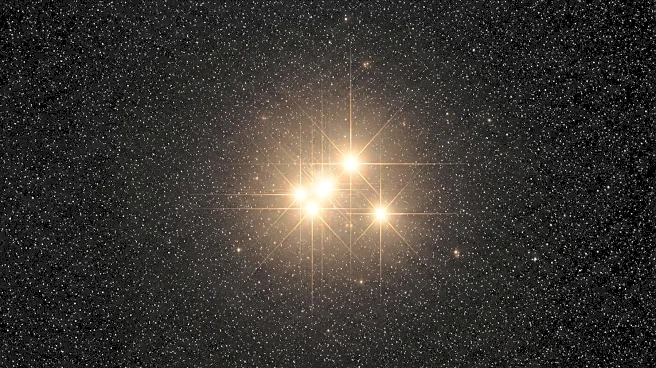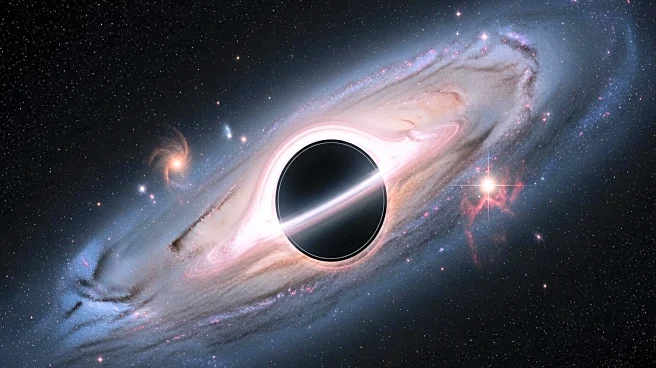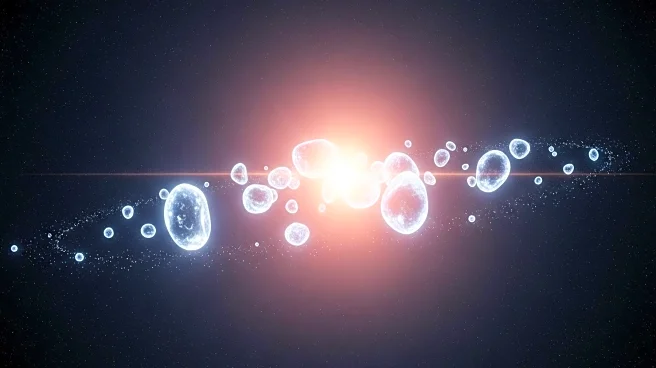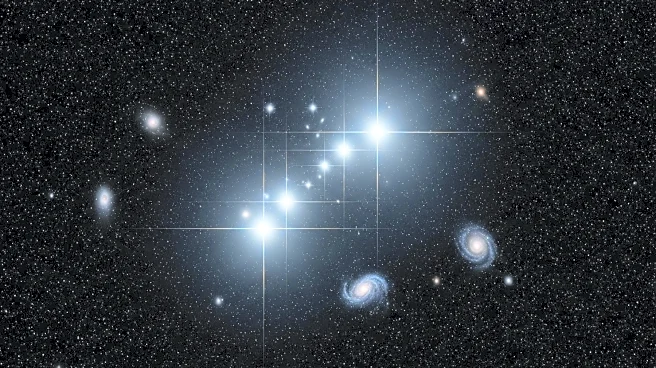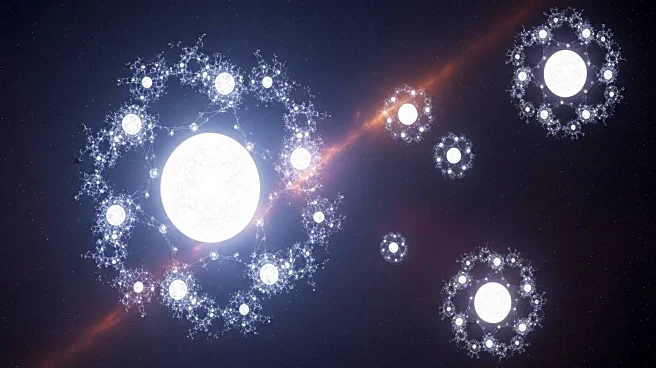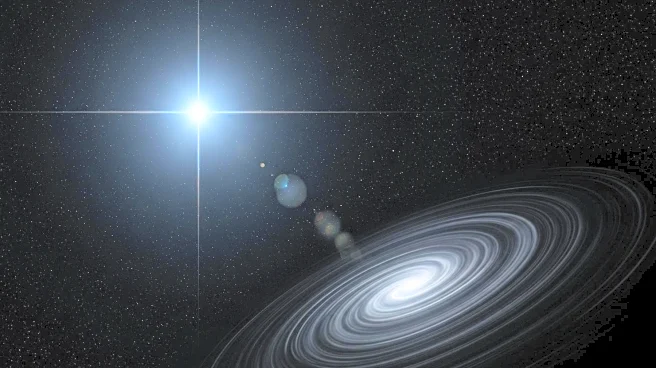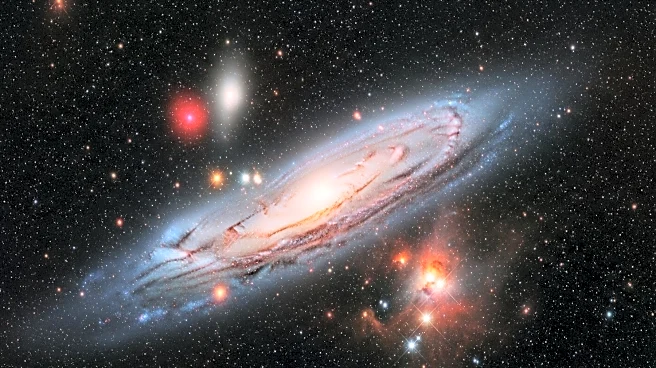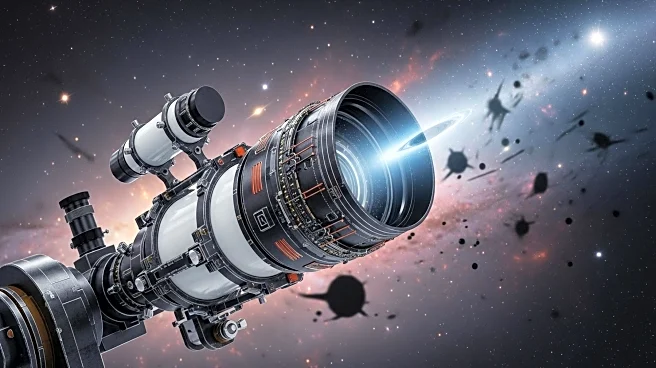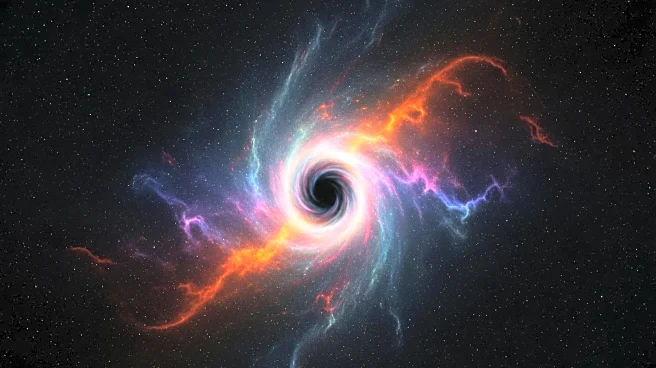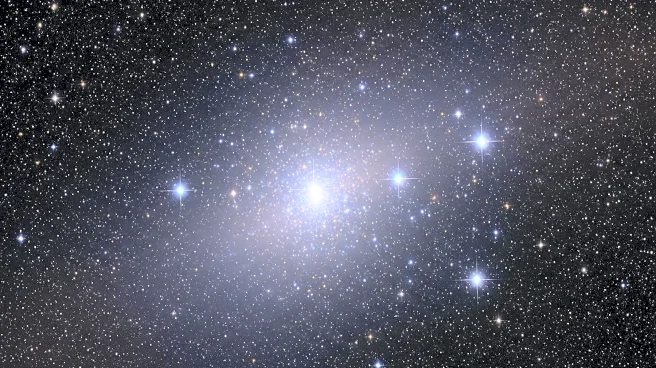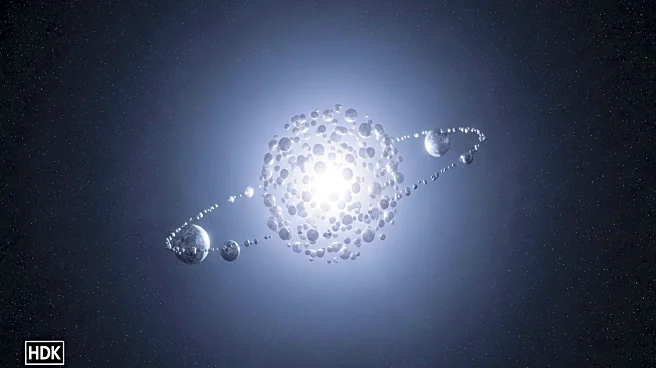What is the story about?
What's Happening?
Recent research has challenged the long-held belief that the universe's first stars were exclusively massive and short-lived. Studies suggest that lower-mass stars may have also formed in the early universe, potentially still existing today. This revelation is based on the role of helium hydride, the universe's first molecule, which acted as a coolant in early gas clouds, enabling the formation of smaller stars. The findings indicate that the early universe may have been more chemically active than previously thought, with a diverse range of star masses forming. This challenges previous assumptions and opens new avenues for understanding the origins of the cosmos.
Why It's Important?
The discovery of potentially long-lived, low-mass stars from the early universe could significantly alter our understanding of cosmic evolution and the formation of galaxies and planetary systems. It suggests that the building blocks of the universe were more varied than previously believed, which could impact theories about the formation of elements and the conditions that led to the development of life. This research may also influence future astronomical studies and the search for ancient stars, providing insights into the universe's early days and the processes that shaped it.
What's Next?
Astronomers are likely to intensify efforts to observe these ancient stars, which could reshape our understanding of the universe's history. The findings may prompt further studies into the chemical and physical processes of the early universe, potentially leading to new models of star formation and evolution. The research community may also explore the implications for the formation of galaxies and planetary systems, as well as the potential for discovering other ancient cosmic phenomena.
Beyond the Headlines
The findings highlight the complex interplay between chemistry and astrophysics in shaping the cosmos. The role of helium hydride as a coolant in early star-forming clouds underscores the importance of molecular interactions in cosmic evolution. This discovery may lead to a reevaluation of the conditions necessary for star formation and the potential for life in the universe, offering a deeper understanding of the fundamental processes that govern the cosmos.
AI Generated Content
Do you find this article useful?
